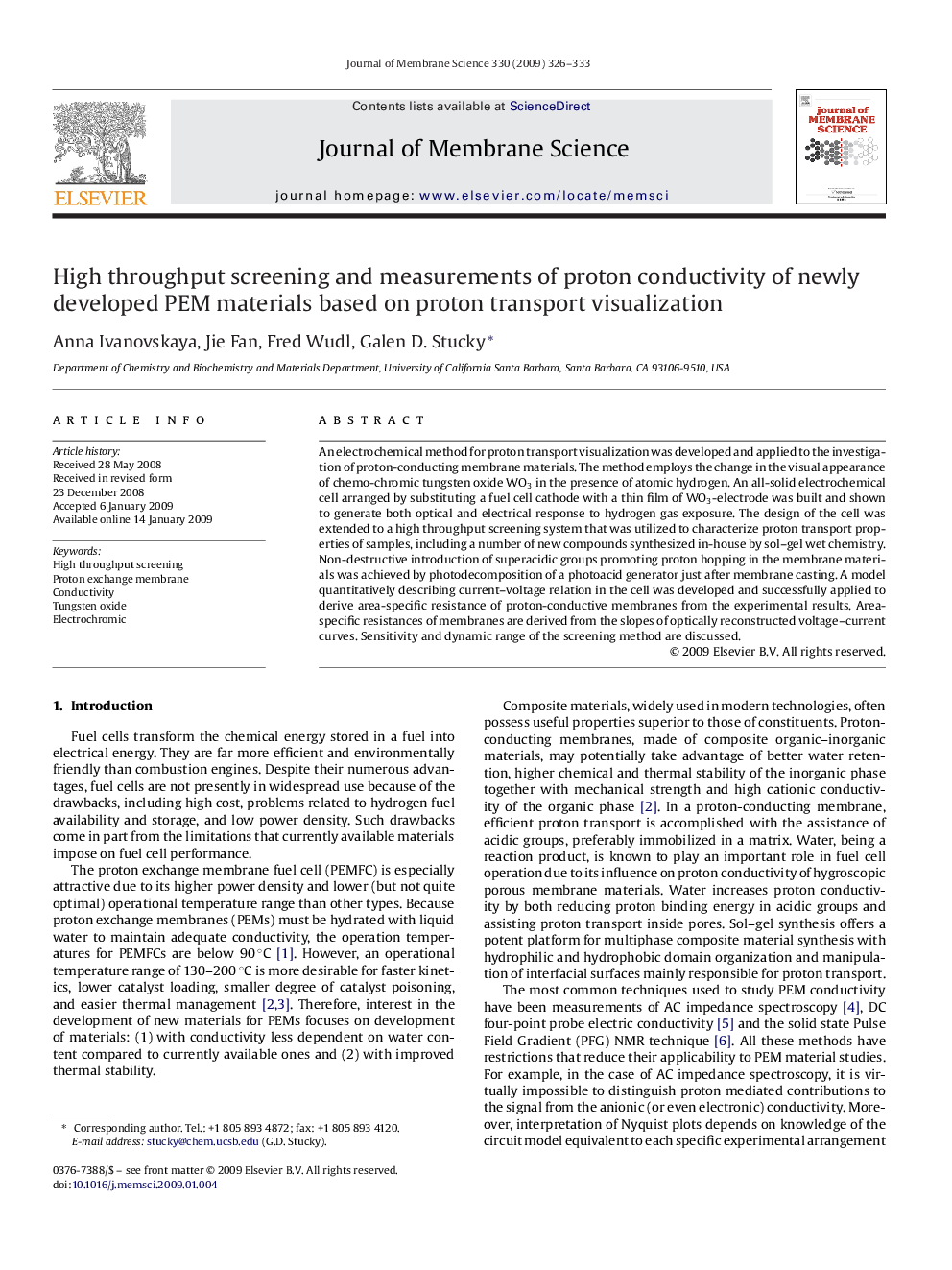| Article ID | Journal | Published Year | Pages | File Type |
|---|---|---|---|---|
| 637195 | Journal of Membrane Science | 2009 | 8 Pages |
An electrochemical method for proton transport visualization was developed and applied to the investigation of proton-conducting membrane materials. The method employs the change in the visual appearance of chemo-chromic tungsten oxide WO3 in the presence of atomic hydrogen. An all-solid electrochemical cell arranged by substituting a fuel cell cathode with a thin film of WO3-electrode was built and shown to generate both optical and electrical response to hydrogen gas exposure. The design of the cell was extended to a high throughput screening system that was utilized to characterize proton transport properties of samples, including a number of new compounds synthesized in-house by sol–gel wet chemistry. Non-destructive introduction of superacidic groups promoting proton hopping in the membrane materials was achieved by photodecomposition of a photoacid generator just after membrane casting. A model quantitatively describing current–voltage relation in the cell was developed and successfully applied to derive area-specific resistance of proton-conductive membranes from the experimental results. Area-specific resistances of membranes are derived from the slopes of optically reconstructed voltage–current curves. Sensitivity and dynamic range of the screening method are discussed.
